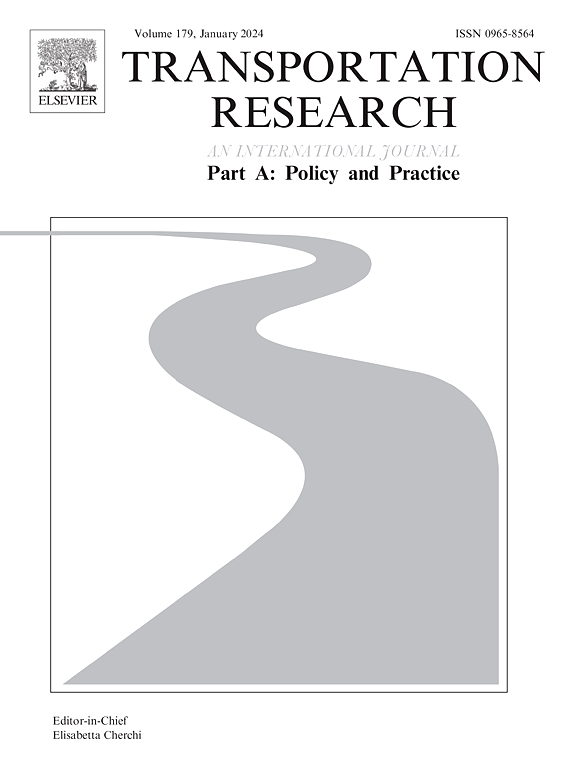On the competition and collaboration in a multi-airport system considering ground connection between airports
IF 6.3
1区 工程技术
Q1 ECONOMICS
Transportation Research Part A-Policy and Practice
Pub Date : 2025-02-01
DOI:10.1016/j.tra.2025.104387
引用次数: 0
Abstract
This study examines passenger travel choices and airline decisions in a multi-airport system (MAS) with two major airports and one reliever airport. The reliever airport is connected to one major airport through ground transportation that allows cross-airport ground transfers, while the connection to the other major airport is minimal. Each airport is served by a single dominant airline. Within this stylized MAS framework, passengers have the following options: travel directly through either major airport to reach their destinations, travel to the reliever airport and then transfer to the connected major airport, or choose other alternatives, i.e., elastic demand. We model equilibrium travel choices of passengers and analyze how various system parameters affect this equilibrium. Furthermore, we investigate the airlines’ optimal pricing strategy and investment strategy for the ground connection service between the reliever and major airports, considering both non-cooperative and cooperative game frameworks, while accounting for the bargaining power dynamics among cooperating airlines. Our major findings are as follows. (i) In the cooperative game, the ratio of airlines’ payoffs and investments in ground connection improvements by the two cooperating airlines corresponds directly to the ratio of their bargaining power. (ii) Cooperation between the airlines serving the minor airport and the connected major airport yields substantial profits, especially under improved ground connection services. (iii) The greater the congestion relief provided by the minor airport and the ground connection to the major airport, the higher the additional profits and stronger competitiveness can be generated through cooperation, and the more willing the major airport is to invest in ground connection improvements.
求助全文
约1分钟内获得全文
求助全文
来源期刊
CiteScore
13.20
自引率
7.80%
发文量
257
审稿时长
9.8 months
期刊介绍:
Transportation Research: Part A contains papers of general interest in all passenger and freight transportation modes: policy analysis, formulation and evaluation; planning; interaction with the political, socioeconomic and physical environment; design, management and evaluation of transportation systems. Topics are approached from any discipline or perspective: economics, engineering, sociology, psychology, etc. Case studies, survey and expository papers are included, as are articles which contribute to unification of the field, or to an understanding of the comparative aspects of different systems. Papers which assess the scope for technological innovation within a social or political framework are also published. The journal is international, and places equal emphasis on the problems of industrialized and non-industrialized regions.
Part A''s aims and scope are complementary to Transportation Research Part B: Methodological, Part C: Emerging Technologies and Part D: Transport and Environment. Part E: Logistics and Transportation Review. Part F: Traffic Psychology and Behaviour. The complete set forms the most cohesive and comprehensive reference of current research in transportation science.

 求助内容:
求助内容: 应助结果提醒方式:
应助结果提醒方式:


